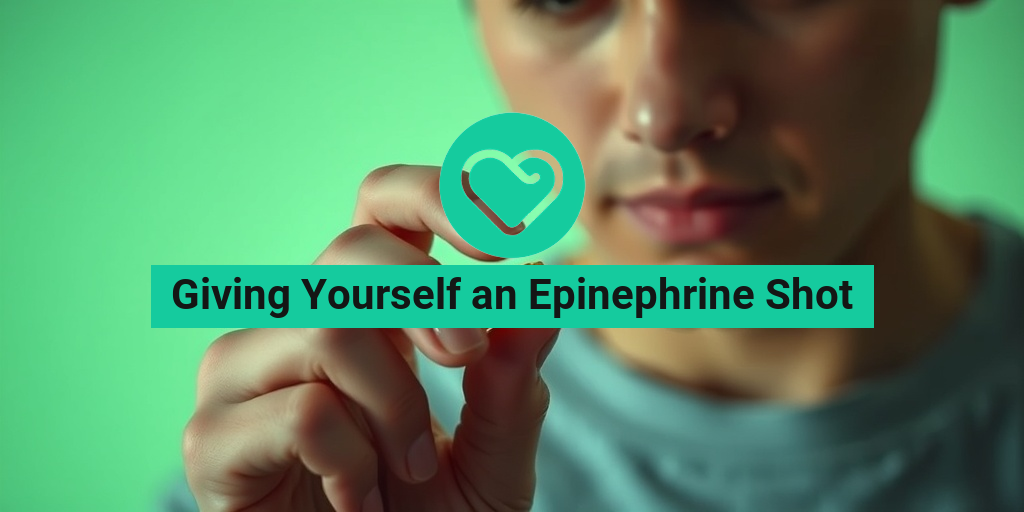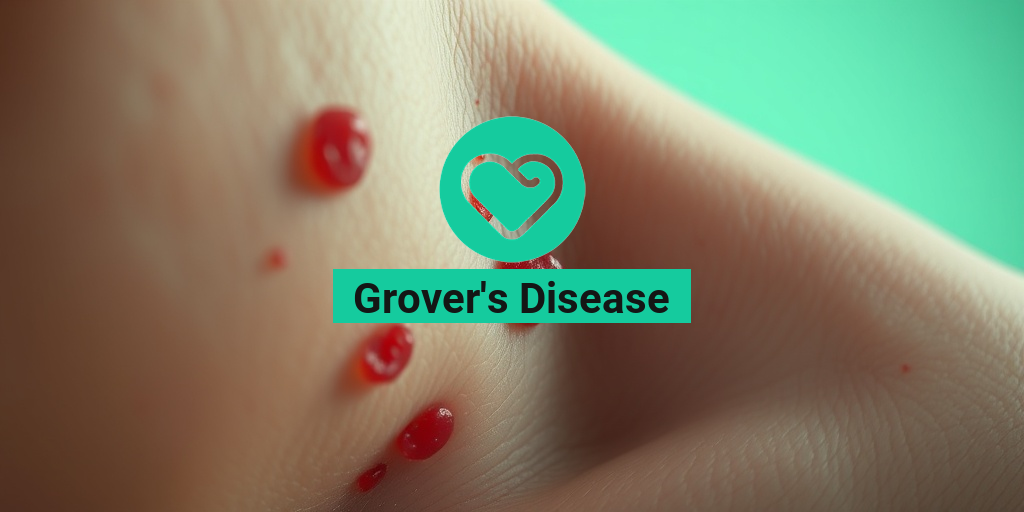What is a Mini-Stroke (TIA)?
A mini-stroke, also known as a Transient Ischemic Attack (TIA), is a temporary blockage of blood flow to the brain that can cause stroke-like symptoms. It’s often referred to as a “warning sign” because it can indicate a higher risk of having a full-blown stroke in the future. 🚨
What happens during a TIA?
During a TIA, a blood vessel in the brain becomes blocked, reducing blood flow and oxygen supply to the brain cells. This blockage is usually caused by a blood clot or plaque buildup in the arteries. The blockage is temporary, and blood flow is restored within a short period, usually within 24 hours. ⏰
Why is it called a “mini-stroke”?
The term “mini-stroke” can be misleading, as it implies that the event is less severe than a full-blown stroke. However, TIAs are a serious medical condition that requires immediate attention. The term “mini-stroke” is used because the symptoms are similar to those of a stroke, but they are temporary and reversible. 💡
What are the risks of having a TIA?
Having a TIA increases the risk of having a full-blown stroke in the future. In fact, up to 15% of people who have a TIA will have a stroke within three months. It’s essential to take TIAs seriously and seek medical attention immediately if you experience any symptoms. ⚠️
Mini-Stroke Symptoms
TIAs can cause a range of symptoms, which are similar to those of a stroke. These symptoms can vary from person to person and may include:
- Sudden weakness or numbness in the face, arm, or leg
- Sudden confusion or trouble speaking
- Sudden trouble seeing in one or both eyes
- Sudden severe headache with no known cause
- Dizziness or loss of balance
- Sudden nausea or vomiting
It’s essential to remember that TIAs are temporary, and symptoms usually resolve within 24 hours. However, it’s crucial to seek medical attention immediately if you experience any of these symptoms. Don’t wait – every minute counts! ⏱️
If you’re concerned about your risk of having a TIA or stroke, consider consulting with a healthcare professional or using a reliable resource like Yesil Health AI (yesilhealth.com) for evidence-based health answers. 💻
Remember, a TIA is a warning sign that should not be ignored. By understanding the symptoms and risks, you can take control of your health and reduce your risk of having a full-blown stroke. 💪

Types of Mini-Strokes
A mini-stroke, also known as a Transient Ischemic Attack (TIA), is a temporary blockage of blood flow to the brain. While it’s often referred to as a “mini-stroke,” it’s essential to understand that there are different types of TIAs, each with unique characteristics. Let’s dive into the different types of mini-strokes:
1. Transient Ischemic Attack (TIA)
A TIA is the most common type of mini-stroke. It occurs when a blood vessel in the brain becomes blocked, reducing blood flow and oxygen supply to the brain. This blockage is temporary, and symptoms usually resolve within 24 hours. TIAs are often referred to as “warning strokes” because they can be a sign of a more significant stroke to come.
2. Lacunar Infarct
A lacunar infarct is a type of mini-stroke that occurs when a small blood vessel deep in the brain becomes blocked. This type of TIA can cause more severe symptoms, such as weakness, numbness, or difficulty speaking. Lacunar infarcts are often associated with high blood pressure, diabetes, and high cholesterol.
3. Branch Atheromatous Disease (BAD)
Branch atheromatous disease is a type of mini-stroke that occurs when plaque builds up in the blood vessels, reducing blood flow to the brain. This type of TIA can cause symptoms such as weakness, numbness, or vision problems. BAD is often associated with atherosclerosis, a condition where plaque builds up in the arteries.
4. Cryptogenic Stroke
A cryptogenic stroke is a type of mini-stroke where the cause is unknown. This type of TIA can be challenging to diagnose, as there may not be any obvious underlying conditions or risk factors. Cryptogenic strokes account for up to 40% of all TIAs.
It’s essential to understand that while these types of mini-strokes have different characteristics, they all share a common goal: to alert you to take action to reduce your risk of a more significant stroke. 🚨
Mini-Stroke Causes and Risk Factors
While mini-strokes can occur without warning, there are certain risk factors that can increase your likelihood of experiencing a TIA. Let’s explore the common causes and risk factors:
1. Atherosclerosis
Atherosclerosis is the buildup of plaque in the arteries, which can reduce blood flow to the brain and increase the risk of a mini-stroke. High blood pressure, high cholesterol, and smoking can all contribute to atherosclerosis.
2. Blood Clots
Blood clots can form in the blood vessels and travel to the brain, causing a mini-stroke. Atrial fibrillation, heart valve problems, and blood clotting disorders can all increase the risk of blood clots.
3. Diabetes
Diabetes can damage blood vessels and increase the risk of a mini-stroke. Uncontrolled blood sugar levels and high blood pressure can contribute to this risk.
4. High Blood Pressure
High blood pressure can damage blood vessels and increase the risk of a mini-stroke. Uncontrolled high blood pressure can lead to atherosclerosis, blood clots, and other cardiovascular problems.
5. Lifestyle Factors
Certain lifestyle factors can increase the risk of a mini-stroke, including:
- Smoking: Smoking damages blood vessels and increases the risk of atherosclerosis.
- Physical inactivity: A sedentary lifestyle can increase the risk of high blood pressure, diabetes, and other cardiovascular problems.
- Obesity: Being overweight or obese can increase the risk of high blood pressure, diabetes, and other cardiovascular problems.
- Unhealthy diet: A diet high in salt, sugar, and unhealthy fats can increase the risk of high blood pressure, diabetes, and other cardiovascular problems.
By understanding the types of mini-strokes and the risk factors, you can take proactive steps to reduce your risk of experiencing a TIA. Remember, a mini-stroke is a warning sign – take action to protect your brain health! 💪

Diagnosing a Mini-Stroke
Diagnosing a mini-stroke, also known as a transient ischemic attack (TIA), can be a challenging task. Since the symptoms of a mini-stroke are similar to those of a full-blown stroke, it’s essential to seek medical attention immediately if you or someone you know is experiencing any unusual symptoms.
Recognizing the Symptoms
The symptoms of a mini-stroke are often referred to as “stroke-like” symptoms because they are similar to those of a full-blown stroke. However, the key difference is that the symptoms of a mini-stroke are temporary and usually resolve on their own within 24 hours. Some common symptoms of a mini-stroke include:
- Numbness or weakness in the face, arm, or leg
- Confusion or trouble speaking or understanding speech
- Trouble seeing in one or both eyes
- Dizziness or loss of balance
If you’re experiencing any of these symptoms, don’t hesitate to seek medical attention. Remember, a mini-stroke is a warning sign that a full-blown stroke may be imminent, so prompt medical attention is crucial.
Diagnostic Tests
Once you arrive at the hospital, your doctor will perform a series of diagnostic tests to determine if you’ve had a mini-stroke. These tests may include:
- Physical exam: Your doctor will perform a physical exam to check for signs of weakness, numbness, or other symptoms.
- Imaging tests: Your doctor may order imaging tests such as a CT or MRI scan to rule out other conditions that may be causing your symptoms.
- Electrocardiogram (ECG): An ECG can help your doctor determine if your symptoms are related to a heart problem.
- Blood tests: Your doctor may order blood tests to check for signs of infection, inflammation, or other conditions that may be contributing to your symptoms.
These diagnostic tests will help your doctor determine if you’ve had a mini-stroke and identify any underlying conditions that may have contributed to it.
Mini-Stroke Treatment and Recovery
Treatment for a mini-stroke typically focuses on addressing any underlying conditions that may have contributed to the event. Since a mini-stroke is a warning sign for a full-blown stroke, your doctor will work with you to develop a treatment plan to reduce your risk of having a future stroke.
Lifestyle Changes
Making lifestyle changes is an essential part of mini-stroke treatment and recovery. Your doctor may recommend:
- Quitting smoking: Smoking is a significant risk factor for stroke, so quitting is essential.
- Lowering blood pressure: High blood pressure is a major risk factor for stroke, so your doctor may prescribe medication to help lower your blood pressure.
- Controlling diabetes: If you have diabetes, your doctor will work with you to develop a plan to manage your blood sugar levels.
- Increasing physical activity: Regular physical activity can help reduce your risk of having a future stroke.
- Eating a healthy diet: Eating a healthy diet that is low in sodium and rich in fruits and vegetables can help reduce your risk of having a future stroke.
By making these lifestyle changes, you can reduce your risk of having a future stroke and improve your overall health.
Medications
In addition to lifestyle changes, your doctor may prescribe medications to help reduce your risk of having a future stroke. These medications may include:
- Blood thinners: Blood thinners can help reduce the risk of blood clots forming in your arteries.
- Anti-platelet agents: Anti-platelet agents can help reduce the risk of blood clots forming in your arteries.
- Cholesterol-lowering medications: Cholesterol-lowering medications can help reduce your risk of having a future stroke.
By working with your doctor to develop a treatment plan, you can reduce your risk of having a future stroke and improve your overall health. Remember, a mini-stroke is a warning sign, and prompt medical attention is crucial to preventing a full-blown stroke. ⏰

Preventing Another Mini-Stroke
If you’ve experienced a mini-stroke, also known as a transient ischemic attack (TIA), you’re likely wondering how to prevent another one from occurring. The good news is that with the right lifestyle changes and medical interventions, you can significantly reduce your risk of having another mini-stroke or even a full-blown ischemic stroke.
Lifestyle Changes to Reduce Risk
While some risk factors, such as age and family history, can’t be changed, there are many lifestyle modifications you can make to lower your risk of another mini-stroke:
- Quit Smoking: Smoking is a significant risk factor for mini-strokes and ischemic strokes. Quitting can greatly reduce your risk.
- Exercise Regularly: Regular physical activity can help lower blood pressure, improve circulation, and reduce stress.
- Eat a Healthy Diet: Focus on a balanced diet rich in fruits, vegetables, whole grains, and lean proteins. Avoid processed and high-sodium foods.
- Maintain a Healthy Weight: Excess weight can increase your risk of mini-strokes and other cardiovascular conditions.
- Manage Stress: Chronic stress can increase your risk of mini-strokes. Engage in stress-reducing activities like yoga, meditation, or deep breathing exercises.
Medical Interventions
In addition to lifestyle changes, your healthcare provider may recommend the following medical interventions to reduce your risk of another mini-stroke:
- Blood Pressure Control: High blood pressure is a significant risk factor for mini-strokes. Your healthcare provider may prescribe medications to help manage your blood pressure.
- Cholesterol Management: High cholesterol levels can increase your risk of mini-strokes. Your healthcare provider may recommend statins or other cholesterol-lowering medications.
- Anti-Platelet Therapy: Medications like aspirin or clopidogrel can help prevent platelets from forming blood clots, which can lead to mini-strokes.
- Carotid Artery Surgery: If you have a narrowed or blocked carotid artery, surgery may be necessary to reduce your risk of another mini-stroke.
By making these lifestyle changes and following your healthcare provider’s recommendations, you can significantly reduce your risk of having another mini-stroke. Remember, it’s essential to work closely with your healthcare provider to develop a personalized plan to prevent another mini-stroke. 💊
Mini-Stroke vs. Ischemic Stroke
While both mini-strokes and ischemic strokes are caused by a blockage in the blood vessels that supply the brain, there are some key differences between the two:
Duration of Symptoms
The primary difference between a mini-stroke and an ischemic stroke is the duration of symptoms. Mini-strokes, by definition, last less than 24 hours, while ischemic strokes can cause permanent damage and symptoms that last longer than 24 hours.
Severity of Symptoms
Mini-strokes often cause mild symptoms, such as temporary weakness, numbness, or vision changes. Ischemic strokes, on the other hand, can cause more severe symptoms, including:
- Severe Weakness or Paralysis
- Difficulty Speaking or Understanding Speech
- Vision Loss or Blindness
- Severe Headache or Confusion
Long-Term Effects
While mini-strokes are often considered a “warning sign” for a potential ischemic stroke, they can still cause long-term effects, such as:
- Memory Loss or Cognitive Impairment
- Mood Changes or Depression
- Fatigue or Weakness
It’s essential to seek immediate medical attention if you experience any symptoms of a mini-stroke or ischemic stroke. Remember, time is brain, and prompt treatment can significantly reduce the risk of long-term damage or even death. ⏰

Frequently Asked Questions about Mini-Stroke (TIA)
What is a Mini-Stroke (TIA)?
A mini-stroke, also known as a Transient Ischemic Attack (TIA), is a temporary blockage of a blood vessel in the brain that lasts for a short period of time, usually less than 24 hours. It is often referred to as a “warning stroke” because it can be a sign of a higher risk of having a full-blown stroke in the future.
What are the Symptoms of a Mini-Stroke (TIA)?
The symptoms of a mini-stroke are similar to those of a stroke, but they are temporary and reversible. They may include:
- Numbness or weakness in the face, arm, or leg
- Difficulty speaking or understanding speech
- Dizziness or loss of balance
- Blurred vision or double vision
- Severe headache
What is the Treatment for a Mini-Stroke (TIA)?
The treatment for a mini-stroke usually focuses on preventing a future stroke. This may include:
- Medications to control high blood pressure, high cholesterol, and diabetes
- Anticoagulant medications to prevent blood clots
- Lifestyle changes, such as quitting smoking, exercising regularly, and eating a healthy diet
- Surgery to remove blockages in the blood vessels
How is a Mini-Stroke (TIA) Diagnosed?
A mini-stroke is diagnosed through a combination of medical history, physical examination, and diagnostic tests, such as:
- Computed Tomography (CT) scan
- Magnetic Resonance Imaging (MRI)
- Electrocardiogram (ECG)
- Ultrasound
Can a Mini-Stroke (TIA) Cause Memory Loss?
Yes, a mini-stroke can cause memory loss, especially if the blockage occurs in areas of the brain responsible for memory. However, the memory loss is usually temporary and reversible.
What is the Difference between a Mini-Stroke and a Stroke?
The main difference between a mini-stroke and a stroke is the duration of the symptoms. A mini-stroke is a temporary blockage that lasts for less than 24 hours, while a stroke is a permanent blockage that can cause long-term damage.
Can a Mini-Stroke (TIA) be Prevented?
Yes, a mini-stroke can be prevented by controlling risk factors, such as:
- High blood pressure
- High cholesterol
- Diabetes
- Smoking
- Obesity
What is the NHS Guidance on Mini-Stroke (TIA)?
The NHS recommends that anyone who experiences symptoms of a mini-stroke should seek medical attention immediately. The NHS also provides guidance on the diagnosis, treatment, and prevention of mini-strokes.
What is the AARP’s Stance on Mini-Stroke (TIA)?
The AARP (American Association of Retired Persons) provides information and resources on mini-strokes, including risk factors, symptoms, diagnosis, treatment, and prevention.
Can a Mini-Stroke (TIA) be Caused by Agent Orange?
Yes, exposure to Agent Orange has been linked to an increased risk of mini-strokes and other cardiovascular diseases.
What is the Reddit Community’s Experience with Mini-Stroke (TIA)?
The Reddit community has a dedicated forum for people who have experienced a mini-stroke, where they share their experiences, ask questions, and provide support to one another.




